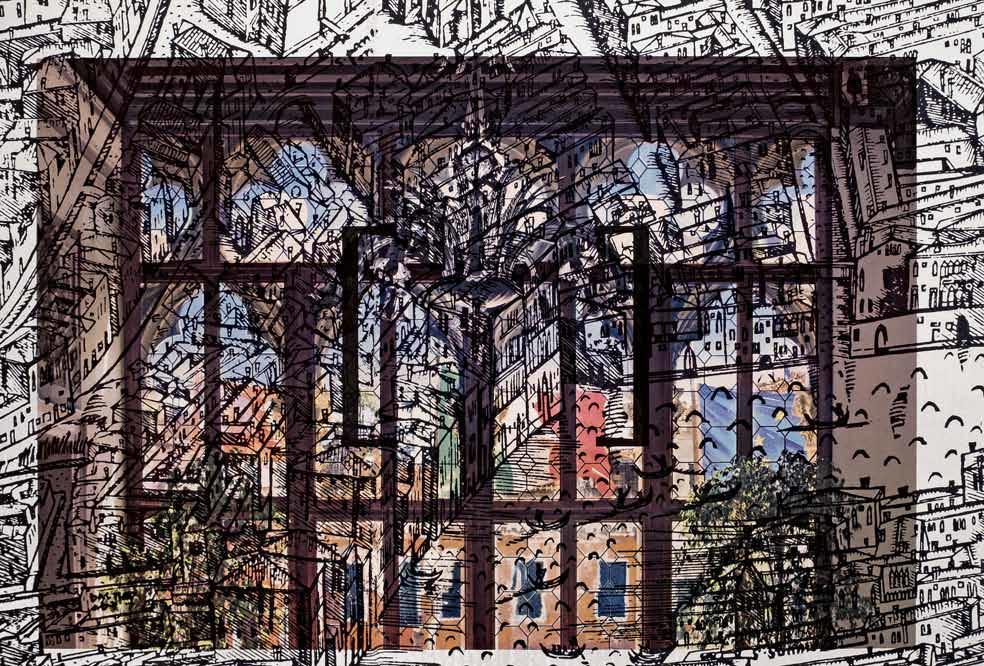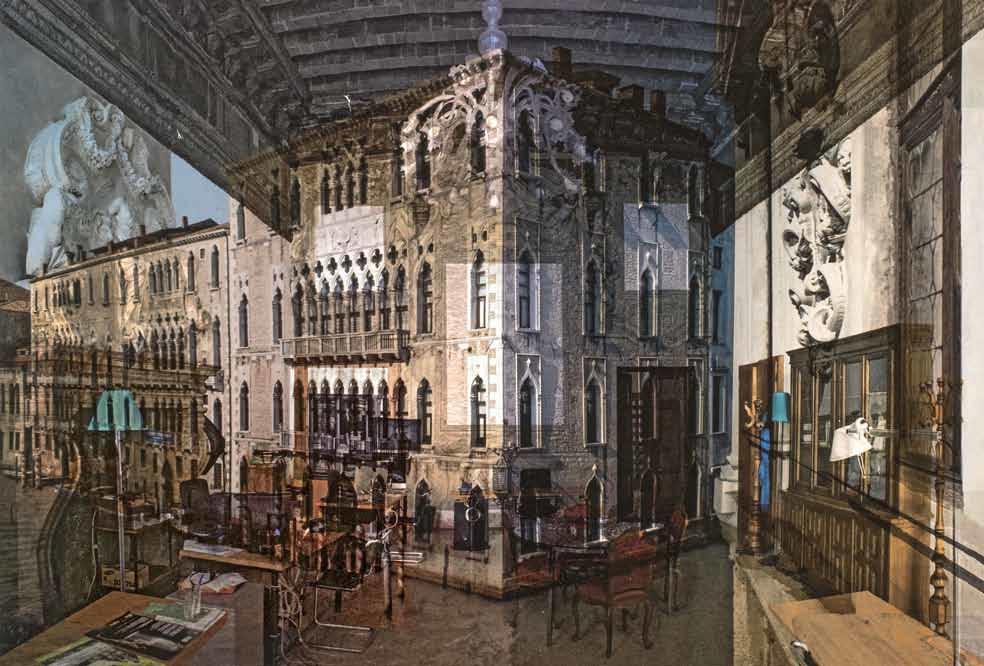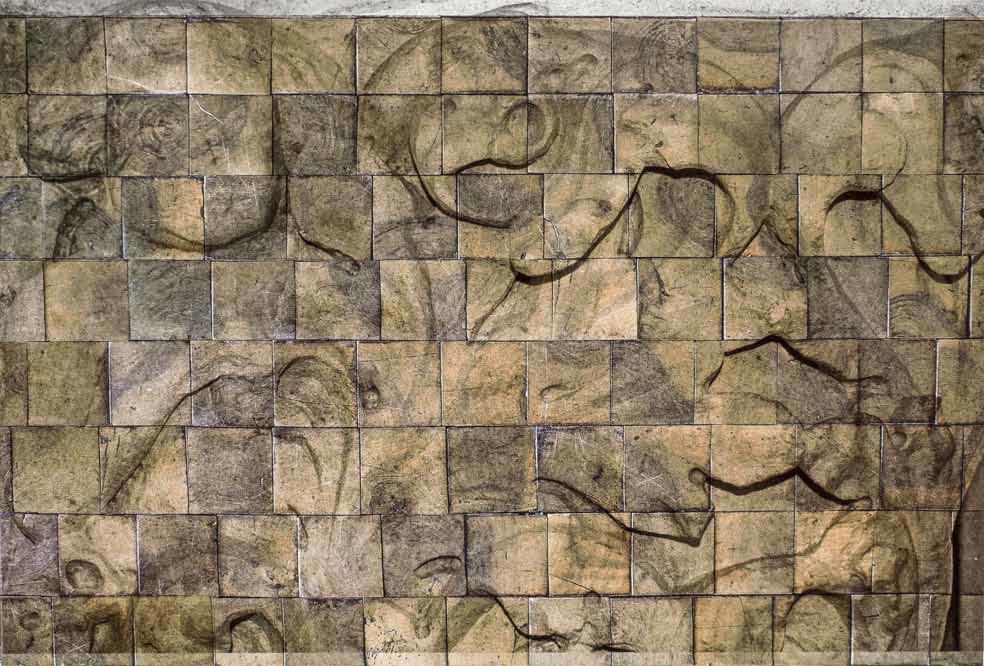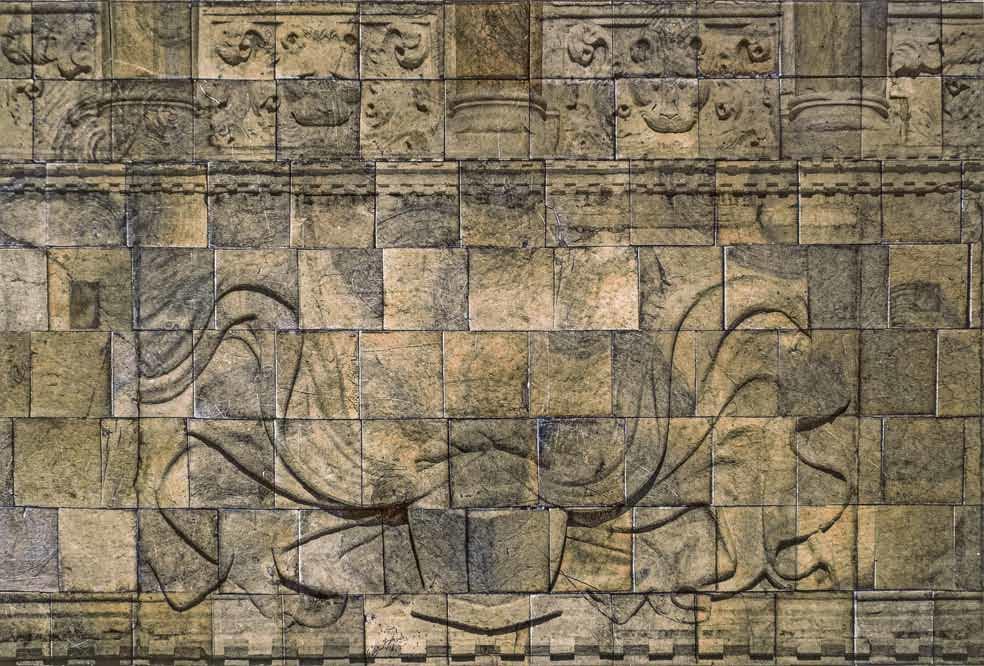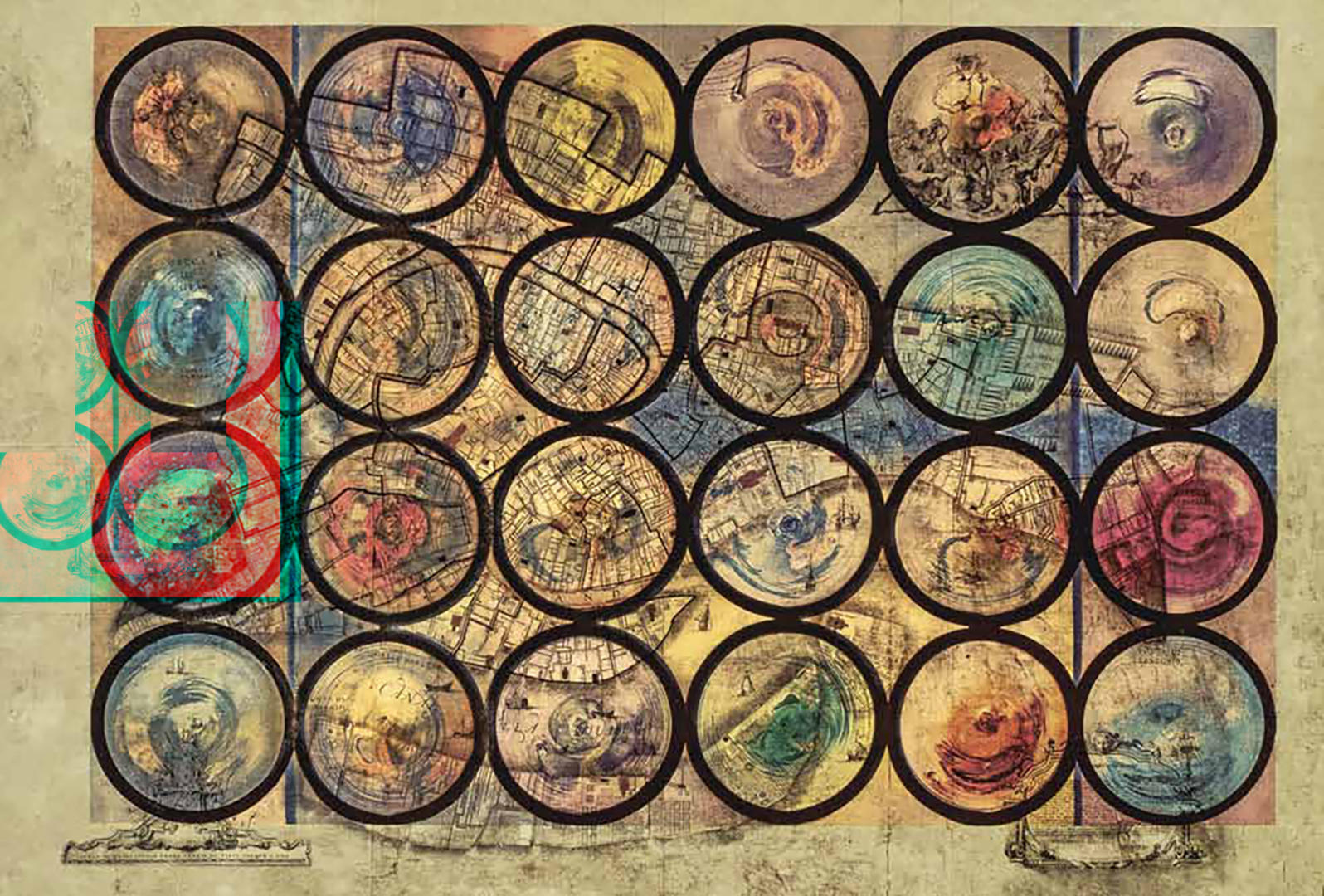
Offset printing: from reproduction to aesthetic expression
In June 2018 Riccardo Zipoli, emeritus Professor of Persian language and Literature, as well as renowned photographer, was at Grafiche Veneziane to check the printing process of his latest work In Domo Foscari, conceived to celebrate the 150th Anniversary of the University Ca’ Foscari of Venice.
On that occasion Zipoli became aware of how the start-up process of offset printing, in which several proof copies are printed, gives rise to an incredible random overlapping of images, shapes and colors. In this phase, in order to avoid unnecessary paper waste, the printer uses pre-printed and, for some reason, discarded machine sheets to obtain the right density of ink. The new images being printed were thus superimposed on other existing images of the discarded press sheets, giving rise to remarkable combinations in which the old and the new images were both distinctly recognisable, but in different ways, depending on the colours and light.
Zipoli therefore concentrates his curiosity on these evocative materials, on the powerful randomness of the superimposed images, and decides to give space to this curious expressiveness in a dreamlike volume totally dedicated to these superimposed images, which will take the title of Select Discards and which has been published by Marsilio in November 2019.
Grafiche Veneziane has actively contributed to the creation of the volume, also participating with a short text written by our Filippo Ranchio regarding the relationship between aesthetics and offset printing, which we report below.
Almost marking a counter-trend to the dominant digitalisation that has been radically changing the publishing products market for years now, we are recently been witnessing an intriguing rediscovery and revival of interest in offset printing. This is an underground movement, certainly a niche market, but significant nonetheless.
An initial analysis reveals that the offset revival has come, almost paradoxically, precisely in those countries in which the process of digitisation and the abandoning of paper would seem to be more advanced than ever: Britain, the United States and Germany, just to name a few. The offset trend, however, should not be seen as a simple reaction, veined with nostalgia, against what is often perceived as inevitable technological progress destined to culminate in the definitive demise of the traditional book form. Indeed, artists, designers and photographers seem much more interested in fully exploring the technical and expressive potential of offset printing. This is not a question of considering printing as a simple means of technical reproduction on paper of a file conceived and designed to be viewed on a computer, but rather of taking up and exploiting that something extra offered by the printing process.
In other words: offset printing is considered not only simply as a reproductive medium, as a mere transposition of information and content from one (digital) support to another (paper), but rather as an expressive tool capable of generating and producing new content. It could even be said that, in the most extreme cases, printing itself ceases to be perceived as a mere means or instrument and becomes the real centre of an art work, as if to claim an until recently unthinkable aesthetic status for itself.
This particular approach actually had a rather illustrious precedent, at least as far as the history of Grafiche Veneziane is concerned. In the early 1990s, Emilio Vedova used to come to us to “custom” print some of his posters by making a series of engravings on the printing plates with punches, knives, forks and whatever else was available. The plates engraved by the artist were then used to print limited edition posters. In more recent years, the Grafiche Veneziane have tried to resume and encourage these experiments by offering their technical knowledge and machinery for very varied projects: some printing plates engraved in our premises have found a place in important contemporary art galleries; one of today’s most celebrated and influential fashion designers, Virgil Abloh, personalised his book covers by drawing with a permanent marker on the printing plates and then offset printing the images on paper; and a duo of Italian designers, M-L-XL, has made an entire book by inking printing plates with around thirty Pantone colours, having previously applied spray paint to them, using the graffiti practice typical of street art. In all of these cases, offset technique was not limited to faithfully reproducing ready-made content, but actively contributed to creating or transforming it, even achieving results considered unexpected and surprising by the artists themselves.
This book by Riccardo Zipoli seems to bring experimentation to a new, unprecedented level of awareness. Making discarded press sheets into the subject of a photographic book means not only acknowledging the offset technique’s “active” role in the creation of an aesthetic experience, but also letting yourself be surprised by the randomness of superimpositions, geometries and symmetries that are difficult to repeat and certainly not (entirely) predictable. There is something genuinely liberating in the idea that a production process apparently dominated in every way by technology still holds surprises in store! The a posteriori intervention of the author in the selection and critical re-appropriation of the material for the publication is undoubtedly crucial and considerably limits the element of arbitrariness and randomness inherent in the process of producing discarded copies. By giving the discarded press sheet an absolutely central role in the whole publishing project, however, the author has demonstrated his interest in investigating the expressive, and not merely reproductive, potential of offset printing, allowing the reader/user to come into contact with print materials that are usually not accessible to the public, as they are straightforward technical checking tools used by the printers.
Lastly, Riccardo Zipoli’s project enables us to highlight an element peculiar to the printing technique adopted by Grafiche Veneziane, of which we are particularly proud. It is an “ethical-ecological” component of our work: to save on waste and avoid using more paper than is necessary to produce each specific products, start-up tests are printed on previously printed sheets that have been discarded. And it is precisely in this way that the superimpositions of images on images, that are at the heart of the present book, originated, as if to celebrate an unexpected convergence of ethics and aesthetics, two closely related aspects in the practice of producing art and its contemplation.

